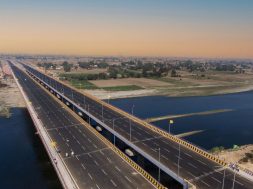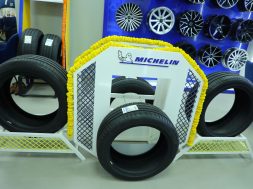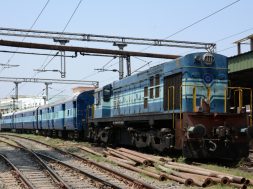Structural steel likely to maintain steady growth
Structural steel likely to maintain steady growth
The demand for high-strength steel has declined considerably as there were no infrastructure projects announced by the government. However, despite global economic slowdown, the demand for structural steel is likely to maintain steady growth
Indian steel structures market is growing at more than 10 per cent a year and has surplus of 4.5 million tonnes over the past few years. According to Deloitte, the structural steel market has experienced a higher growth compared to steel as well as construction GDP. Despite global economic slowdown, demand for structural steel is likely to maintain steady growth.
We have discussed with several industry experts and found that the demand for high-strength steel hadn’t increased in construction and infrastructure sectors, but it had declined considerably as there were no infrastructure projects announced by the government. The current apartment steel consumption is mostly limited to low-height industrial buildings and would be about 600,000 tonnes in such buildings with another 4 million tonnes in infrastructure.
Even the real estate sector is very slow as apartments are not being sold, especially from the last 6 months. Unless the government announces some projects and interest rates do not fall, the demand isn’t going to rise.Consumption of steelThe per-capita consumption for structural steel in India is 6.2 kg and the overall per consumption for the next 10 years has a potential to look even more attractive. Steel, cement and power sector are key drivers for the consumption of structural steel.
“Consumption is mainly by engineering industries, transmission towers manufacturers, manufacturers of cranes, boilers, capacitors, real estate, and grating industry,” said Amit Raniwala, Director, Mahavir Steel.The current cement to steel ratio in India is only about 0.3 which is much lower than the benchmark in advanced countries. Ravi Singh, Senior Vice President and Head Marketing, Essar Steel, said, “Taller buildings tend to cost less when they are made from high-strength steel framing due to lower foundation costs, faster delivery, and lower labour cost and skill level.”
However, it is expected to see increase in steel intensity consumption in construction sector.
Advantages of steelUsing structural steel in building segment helps in faster construction and overcome space constraints at project site and has large clear spans. It also has high-load bearing strength with low weight and causes lower pollution compared to concrete. Even steel can be reused at end of its life cycle, and it has better aesthetic appeal.
Mr Singh added, “Steel production causes less pollution than most other industrial materials including cement. Further, steel can be recycled 100 per cent, and its value generally appreciates over the time while other building materials’ value depreciates over the time. A steel building is like an investment in gold for the future generation.”
Measures to encourage steel The responsibility to increase steel in construction is tasked to the private sector who would take the decision based on the attractiveness of the sector. Mr Singh explained, “It is nice to see that private investments in fabrication and steel intensive construction have been increasing in the last few years and designers are now more amenable to using steel based designs in their building architecture.”
Whereas Mr Raniwala said, “The government requires doing a lot for steel consumptions. Our consumption of steel is very low in rural areas; the government should try and make people use steel in rural areas for all construction purposes and should announce more road and infrastructure projects. There should be strict quality parameters so that inferior quality steel is not imported from countries like China.”
Status of high-strength steelIt is a historical fact that India did not have good plate mills for a long time and was dependent on imported high-strength steels. Mr Singh added, “Today, all the high strength steels needed for construction and infrastructure are available in the country. Not only that the most sophisticated steels, which are used for battle tanks and missile launchers, are also available in the country.”
According to Mr Raniwala, “High-strength steel is still dominated by the big five companies like SAIL, TISCO, Essar, JSW, and VSP. Indian steel producers have surplus capacity to meet the increasing demand.”
Challenges facedAccording to Mr Singh, land acquisition remains a major challenge for setting up greenfield plants.
Mr Raniwala believes that import of low-quality steel, real estate’s bad shape, liquidity crunch in market, companies using malpractices like evasion of duties are major challenges. “There is no scope of any innovations at this space as right now it is the survival of the fittest,” he signed off.
8
Cookie Consent
We use cookies to personalize your experience. By continuing to visit this website you agree to our Terms & Conditions, Privacy Policy and Cookie Policy.









